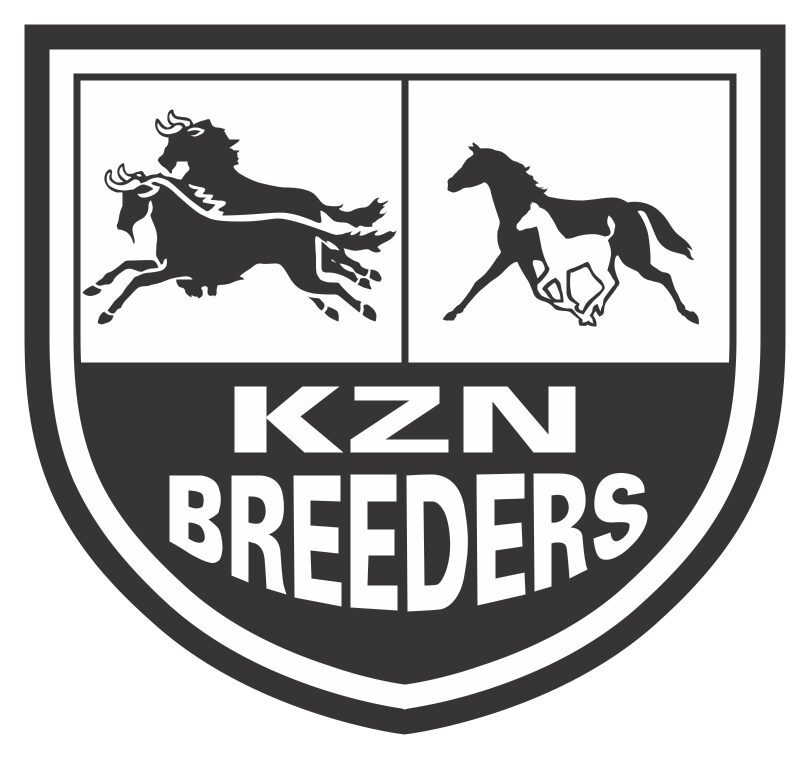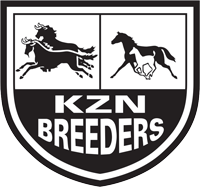| The Origins of our Thoroughbred Racehorse |
There are over 5,000 Thoroughbred foals born in Great Britain every year, and over 110,000 born worldwide, from America to Japan, Argentina, Brazil, Italy, Germany, New Zealand, Australia, Kenya, Zimbabwe and of course South Africa. Each one can trace their ancestry back through the father’s line to one of three horses – the Godolphin Arabian, the Byerley Turk or the Darley Arabian. This is most impressive, considering most of us are not able to trace our family tree beyond our great grandparents! It’s astonishing to realise the direct bloodline of a thoroughbred horse can be followed back through tens of generations.
The Thoroughbred originated in England. Through the crusades the English bred heavy horses that could do hard driving work and carry a man in full armour. In the Middle East lighter horses were being bred for their stamina and speed. The golden age for the importation of eastern stallions was from the 17th to the 18th century, when the incentive to improve racehorses was doing its work. They tended to be labeled Arabians, Turks and Barbs, and whoever owned them at that moment in time, became their name, and it caused a lot of confusion in the early stud books. Arab stallions were considered the best for getting racehorses, however the Duke of Newcastle suggested the use of the Barb breed instead, because they weren’t as exorbitantly expensive as the well-bred Arabs, and was known to have said that a bad Barb was better for siring racehorses then any English horse!
The following three stallions founded dynasties that have persisted through the ages to this very day. The mares used, were initially recorded as 78 mares, but after establishing much later that many of these mares were duplicated in error, it is possible there were only 25-30 mares. They appeared to be mostly Barbs of Eastern descent, although their countries and origin have never been established it is presumed that from their names given.
 In 1690 Captain Robert Byerley captured a stallion of mostly Middle Eastern blood. It was said that Captain Byerley was able to avoid capture while on a reconnaissance mission before the Battle of Boyne in 1690, thanks to Byerley Turk’s exceptional turn of foot. He rode this stallion through the remainder of the war and then brought him home to England, and he began to breed him with a few well-bred native mares. The horse lived for six more years siring many important horses and becoming the greatest contributor to the Herod line of thoroughbreds, along with Highflyer, a son of Herod.
In 1690 Captain Robert Byerley captured a stallion of mostly Middle Eastern blood. It was said that Captain Byerley was able to avoid capture while on a reconnaissance mission before the Battle of Boyne in 1690, thanks to Byerley Turk’s exceptional turn of foot. He rode this stallion through the remainder of the war and then brought him home to England, and he began to breed him with a few well-bred native mares. The horse lived for six more years siring many important horses and becoming the greatest contributor to the Herod line of thoroughbreds, along with Highflyer, a son of Herod.
Herod, foaled in 1758, who was leading sire eight times over, was owned by Duke of Cumberland, the third son of King George II. While Herod was not a particularly great race horse himself he contributed to the thoroughbred breed as an excellent sire. Descendent Highflyer and his sons were champion stallions 23 times in 25 years. The Byerley Turk’s line now has much less influence than that of the Darley Arabian.
 In 1704 Thomas Darley shipped a 4 year old stallion to England from Syria, who became known as Darley Arabian, the second foundation stallion. Darley Arabian was transported to Yorkshire, England, where he was bred to selective native racing mares, the most notable being a mare named Betty Leeds. It was from this mare that two very exceptional colts were born. The first great racing horses were born and they were called Flying Childers, and Bartlett’s Childers. Through these colts came the great horse Eclipse, who was the great, great grandson of the Darley Arabian. Over 80% of modern racehorses can trace their descent to Eclipse, including the great Canadian stallion Northern Dancer. Eclipse was foaled in 1764, the year of the great eclipse of the sun. He won 18 races, never appearing the least bit stretched. Owners were reluctant to put their horses up against him and eight of his races were declared walkovers!
In 1704 Thomas Darley shipped a 4 year old stallion to England from Syria, who became known as Darley Arabian, the second foundation stallion. Darley Arabian was transported to Yorkshire, England, where he was bred to selective native racing mares, the most notable being a mare named Betty Leeds. It was from this mare that two very exceptional colts were born. The first great racing horses were born and they were called Flying Childers, and Bartlett’s Childers. Through these colts came the great horse Eclipse, who was the great, great grandson of the Darley Arabian. Over 80% of modern racehorses can trace their descent to Eclipse, including the great Canadian stallion Northern Dancer. Eclipse was foaled in 1764, the year of the great eclipse of the sun. He won 18 races, never appearing the least bit stretched. Owners were reluctant to put their horses up against him and eight of his races were declared walkovers!
 Eclipse retired to stud in 1771 and sired three Derby winners but his ability to sire offspring that were well adapted to the new shorter races for two and three year olds ensured him a place in the racing history books. However, due to terrific competition from Herod and the Byerley Turk line, Eclipse was never actually declared champion.
Eclipse retired to stud in 1771 and sired three Derby winners but his ability to sire offspring that were well adapted to the new shorter races for two and three year olds ensured him a place in the racing history books. However, due to terrific competition from Herod and the Byerley Turk line, Eclipse was never actually declared champion.
After his death, Eclipse was dissected to try to work out the secret of his success – it was decided that his huge heart pumped blood around the body more effectively, while his back legs gave plenty of leverage. Powerful lungs completed the winning combination. His skeleton is still owned by the Royal Veterinary College and can be seen at the National Horseracing Museum in Newmarket.
 The third foundation sire was Godolphin Arabian, or sometimes referred to as the Godolphin Barb. He was brought to England in 1728 by Lord Godolphin. Foaled in about 1724 and exported from Yemen via Syria to the Arab stud of the Bey of Tunis, he was believed to be one of four stallions initially given to King Louis XV of France in 1730. It is believed that three of the stallions were turned out into the forests of Brittany, and the fourth, Godolphin Arabian, was bought by Mr Edward Coke, and subsequently exported to Britain, where he became the property of Lord Godolphin, and was then known as Goldolphin Arabian. He was mated to a mare called Roxana and there are many legends behind this mating which also suggest that when a superior stallion called Hobgoblin was presented to the mare for mating, he refused to do so and Godolphin Arabian won the right to cover her. This covering produced the best racehorse of the day, called Lath, who turned out to be not only a good racehorse but a good stallion.
The third foundation sire was Godolphin Arabian, or sometimes referred to as the Godolphin Barb. He was brought to England in 1728 by Lord Godolphin. Foaled in about 1724 and exported from Yemen via Syria to the Arab stud of the Bey of Tunis, he was believed to be one of four stallions initially given to King Louis XV of France in 1730. It is believed that three of the stallions were turned out into the forests of Brittany, and the fourth, Godolphin Arabian, was bought by Mr Edward Coke, and subsequently exported to Britain, where he became the property of Lord Godolphin, and was then known as Goldolphin Arabian. He was mated to a mare called Roxana and there are many legends behind this mating which also suggest that when a superior stallion called Hobgoblin was presented to the mare for mating, he refused to do so and Godolphin Arabian won the right to cover her. This covering produced the best racehorse of the day, called Lath, who turned out to be not only a good racehorse but a good stallion.
The second mating produced Cade, and whilst not a good racehorse, he made a significant contribution of his own to the breed. Another legend has it that he had a close relationship with a cat, which died of grief after his death. There might be some substance to this legend, as a cat is almost always depicted in his portraits.
The descendants of these sires were bred and crossbred to create a horse that was very fast, yet strong. Almost all of the selective breeding was for one purpose, to produce the fastest horse on the track. It has a wide girth for a large lung capacity, and strong legs for hard running. The shoulder is long and sloped to allow a greater stride. The hind leg is long so that it can gain greater ground quickly. Everything about the breed suggests speed. Originally bred to cope with endurance tests as mature horses, the nature of the Thoroughbred has changed along with the demands of racing. They have become much larger, faster over shorter distances and are maturing earlier.
The early Thoroughbreds ran in match races, mostly at around four miles, which suited the stamina rich, tough Arabian influence. But in the latter quarter of the 18th century, the nature of racing changed with the inception of the far shorter St Leger, Oaks and Derby, and an increasing emphasis on racing two and three-year-olds.
Thoroughbreds are able to reach their peak speeds of approximately 50-60kms per hour. Secretariat ran his 31 length victory in the 1973 Belmont Stakes, not only in a record time of 2:24, but he ran an average of 60km/hour over 2,4km in the process.
With the development of the Thoroughbred came the need to record the breed’s evolution. The General Stud Book was first published by Weatherby’s in 1791, and has continued to the present day. It has been the base for all other Stud Books world-wide.
All horses featured in the General Stud Book have fulfilled the criteria to be registered Thoroughbreds if all lines of their pedigree can be traced to horses in the Book or another approved foreign Stud Book. One of the rules regarding the breeding of a Thoroughbred, is that all matings that take place are natural, with the mares travelling to farms to be bred if necessary. Artificial insemination, very popular with warmblood sport horse breeding, is not allowed, which has become a controversial subject in this modern day in age. The reason being that it keeps the pedigrees and controls pure, with no room for error. All foals are DNA tested, prior to being registered in the studbook of their own country, and being granted a passport to be registered in order to be able to race.

